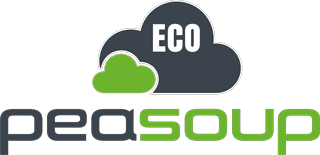Table of Contents
How to Connect PeaSoup S3 to Dell EMC ECS
Follow these steps to configure Dell EMC ECS to use PeaSoup S3 as a cloud storage target. PeaSoup provides an S3-compatible API, so it can be configured similarly to Amazon S3 within Dell EMC ECS for backup or storage purposes.
Prerequisites
- PeaSoup S3 Access: Ensure you have the following details:
- Access key
- Secret key
- Bucket name
- PeaSoup S3 endpoint URL https://s3.eu-west-1.peasoup.cloud
- Dell EMC ECS system configured and accessible with administrative access.
Steps to Connect PeaSoup S3 to Dell EMC ECS
- Log into Dell EMC ECS Management Console:
- Open the Dell EMC ECS management console in your browser and log in using your administrator credentials.
- Navigate to Object Storage Configuration:
- In the ECS dashboard, go to Storage > Object Storage.
- This is where you will configure the external S3-compatible storage (PeaSoup S3) for your ECS environment.
- Configure PeaSoup S3 as External Cloud Storage:
- Click on Create Bucket or Configure External Storage (depending on your ECS version).
- Select S3-Compatible as the type of external cloud storage.
- Enter the following details to integrate PeaSoup S3 with ECS:
- Access Key: Enter your PeaSoup S3 access key.
- Secret Key: Enter your PeaSoup S3 secret key.
- Bucket Name: Specify the name of your PeaSoup S3 bucket where data will be stored.
- Endpoint URL: Enter the PeaSoup S3 endpoint https://s3.eu-west-1.peasoup.cloud
- Region: Leave this blank unless PeaSoup specifies a region.
- Click Save or Create to complete the configuration.
- Test the Connection:
- Once PeaSoup S3 is configured, test the connection by uploading a sample file or running a backup job to the PeaSoup S3 bucket from your ECS environment.
- Ensure that the test file or backup is successfully uploaded to PeaSoup S3 by checking the PeaSoup S3 bucket in the console or API.
- Set Up Backup or Storage Policies:
- In the Dell EMC ECS console, create or modify backup policies to use PeaSoup S3 as the storage target for your backups.
- Configure the policy to meet your backup needs, including schedules, retention periods, and types of data to back up.
- Save the policy, and it will automatically send backups to PeaSoup S3 based on your configured schedule.
- Monitor Backups and Data Transfers:
- Monitor the progress of backups and data transfers to PeaSoup S3 within the ECS console. This ensures data is successfully uploaded to the cloud storage target.
- You can check logs or set up notifications for backup failures or successful completion.
- Restore Data from PeaSoup S3 (Optional):
- If you need to restore data from PeaSoup S3, navigate to the Restore section in the ECS management console.
- Select the relevant backup from PeaSoup S3 and follow the restoration process to recover your data to the original or a new ECS environment.
Optional: Fine-Tune Backup and Storage Settings
- In the Dell EMC ECS console, you can configure additional settings such as:
- Data Compression: Enable compression to reduce the size of backups before transferring them to PeaSoup S3.
- Data Encryption: Ensure data is encrypted before uploading it to PeaSoup S3 for added security.
- Retention Policies: Set retention rules for backups stored in PeaSoup S3, ensuring older backups are archived or deleted automatically.
Notes
- Ensure that Dell EMC ECS can communicate with PeaSoup S3 by verifying your network and firewall settings.
- PeaSoup’s S3-compatible API enables seamless integration with Dell EMC ECS, providing flexible and scalable cloud storage for backups and data management.
